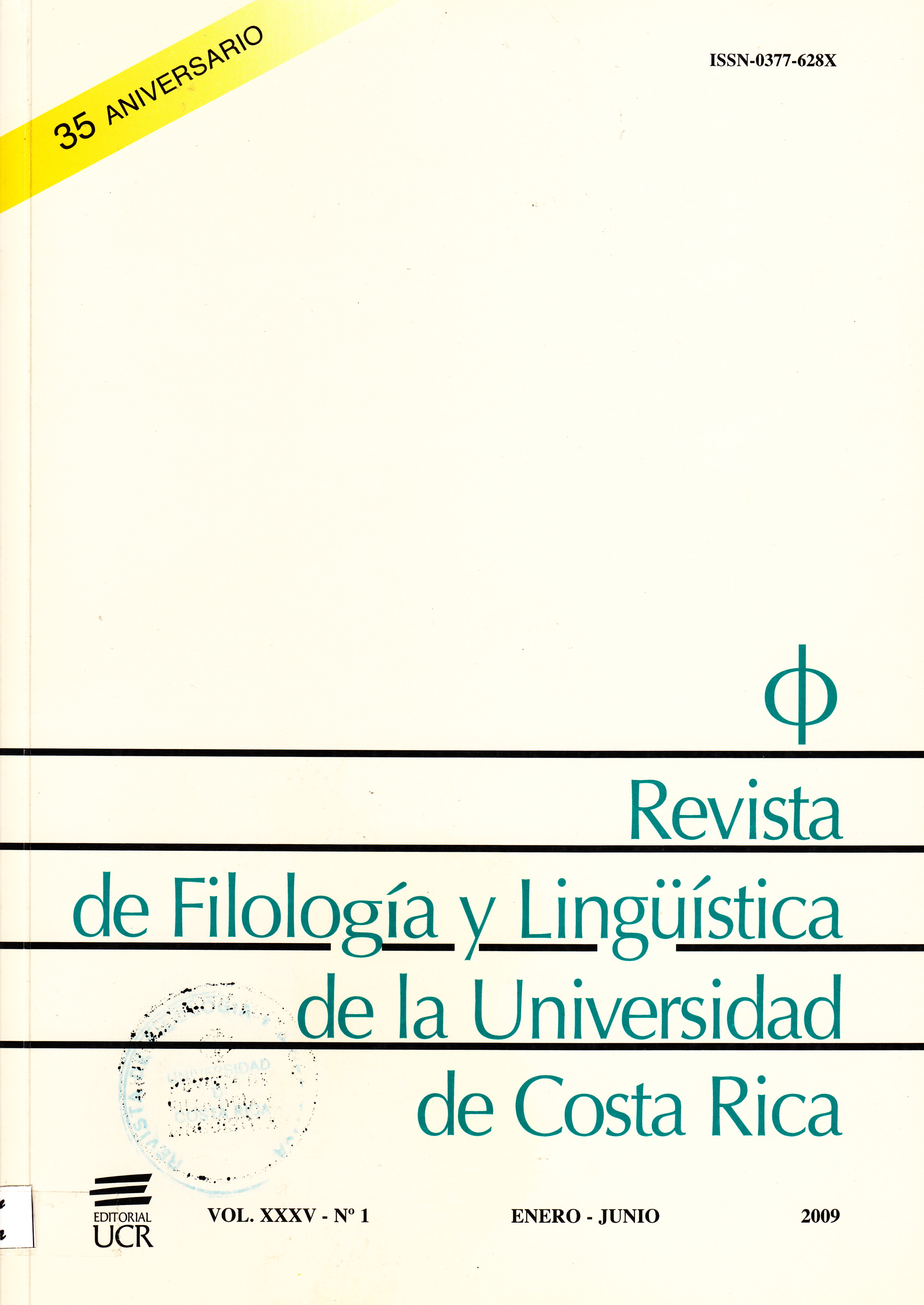Abstract
The purpose of this article is to show the importance of costumbrist flâneur literature in the development of this aesthetic movement in Spain. The dimensions of the flâneur and of flanerie are analyzed in writings by Larra and Mesonero Romanos: a curious attitude towards public spaces, physical distancing, identification of urban social types, leisure behavior, semiotic metaphore use of the city as an open book, fragmented perception of urban diversity. In this article relations are also established with the European costumbrist literature of the time (France, Germany, England).References
Addison, Joseph. 1991. Los placeres de la imaginación y otros ensayos de The Spectator. Tonia Raquejo (ed.). Madrid: Visor.
Baker, Edward. 1991. Materiales para escribir Madrid. Literatura y espacio urbano de Moratín a Galdós. Madrid: Siglo XXI.
Balzac, Honoré de. 1975. Obras completas. Tomo III. La comedia humana. Escenas de la vida parisiense. Madrid: Editorial Aguilar.
Brand, Dana. 1991. The spectator and the city in the nineteenth-century American literature. Cambridge: Cambridge University Press.
Benjamin, Walter. 1972. “El París del Segundo Imperio en Baudelaire. II. El flâneur”. En: Iluminaciones II: Poesía y capitalismo (Prólogo y traducción de Jesús Aguirre). Madrid, España: Editorial Taurus.
Curtius, Ernst Robert. 1998. Literatura europea y Edad Media Latina. México : Fondo de Cultura Económica.
Dickens, Charles. 1957. Sketches by Boz. Illustrative of every-day life and every-day people. London: Oxford University Press.
Escobar, José. 1977. “Costumbres de Madrid: Influencias de Mercier en un programas costumbrista de 1828”. Hispanic Review. 45 (1).
Epstein Nord, Deborah. 1995. Walking the Victorian Streets. Women, Representation, and the City. Ithaca: Cornell University Press.
Köhn, Eckhardt. 1989. Strassenrausch: flanerie und kleine form-versuch zur literaturgeschichte des flâneurs von 1830-1933. Berlin: das Arsenal.
Hoffmann, E.T.A. 1989. Cuentos. México: Editorial Porrúa.
LaCroix, Auguste. 1841. “El flâneur”. En: Les français peints par eux-mêmes. Paris: L. Curmer, Éditeur.
Larra, Mariano José de. 1968. Artículos completos. Madrid: Aguilar.
Mesonero Romanos, Ramón de. 1967. Escenas matritentes. Barcelona: Editorial Bruguera.
Neumeyer, Harald. 1999. The Flâneur: Konzeptionen der Moderne. Würzburg: Königshausen und Neumann.
Ramos, Julio. 1989. Desencuentros de la modernidad en América Latina. Literatura y política en el siglo XIX. México: Fondo de Cultura Económica.
Rignall, John. 1992. Realist fiction and the strolling spectator. London: Routledge.
Rose, Margaret A. 2007. “Flâneurs and Idlers: a ‘panoramic ’overview”. En: Rose, Margaret A. (ed.). Louis Huart. Physiologie du flâneur (1841). Albert Smith. The Natural History of the Idler upon Town (1848). Bielefeld: Aisthesis, 1-73.
Rose, Margaret A. (ed.). Louis Huart. Physiologie du flâneur (1841). Albert Smith. The Natural History of the Idler upon Town (1848). Bielefeld: Aisthesis.
Robert, Paul. 1987. Le Petit Robert 1. Dictionnaire alphabétique et analogique de la langue française. Rey , A. et J. Rey-debove (dirs.). Paris: SEJER.
Rubio, Enrique. 1993. “Prólogo”. Mariano José de Larra. Artículos. Madrid: Editorial Cátedra.
Severin, Rüdiger. 1988. Spuren des Flâneurs in deutschprachiger Prosa. Frankfurt/Main: Verlag Peter Lang.
Smith, Albert. 2007.. The Natural History of the Idler upon Town (1848). Edición Facsimilar. Bielefeld: Aisthesis.

